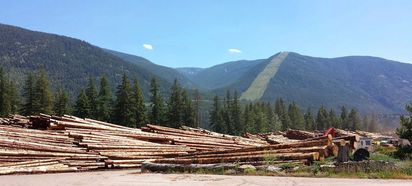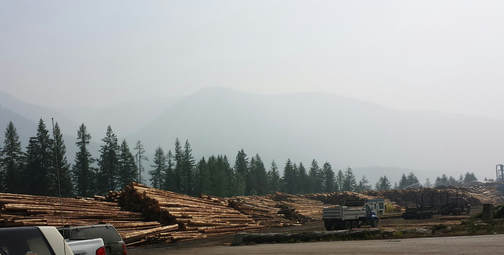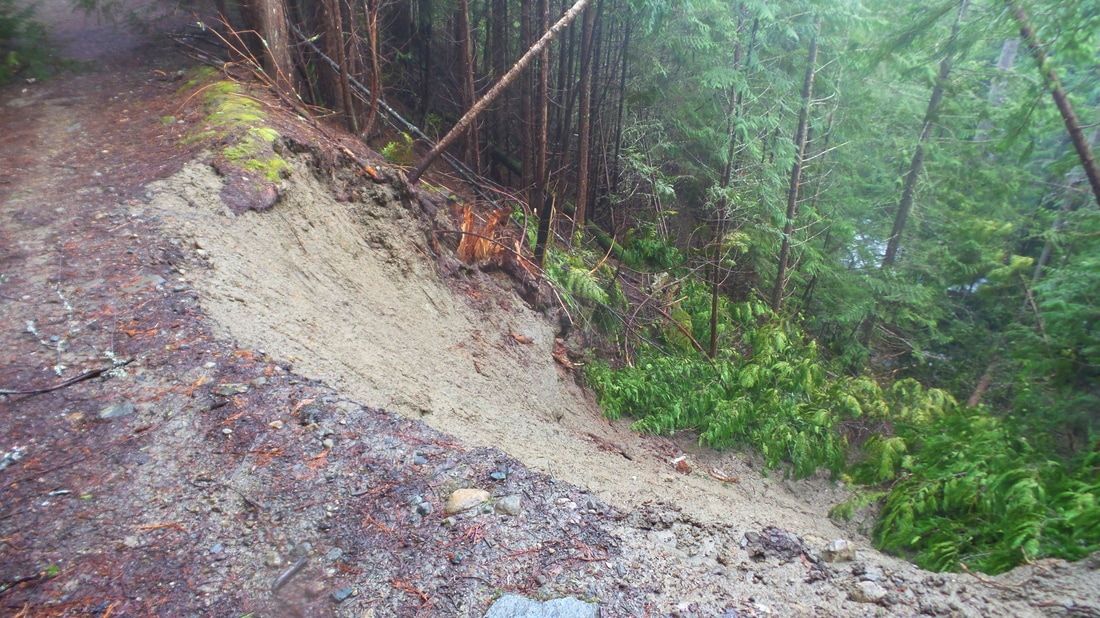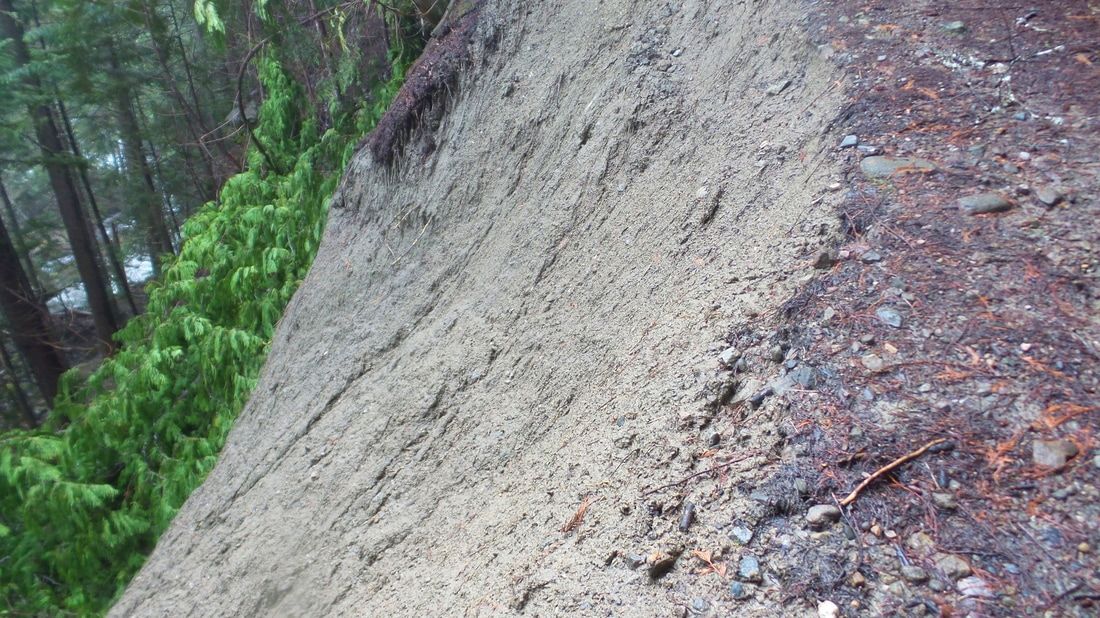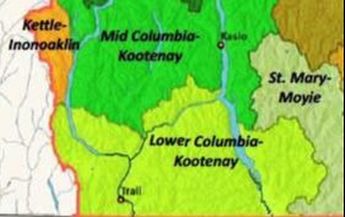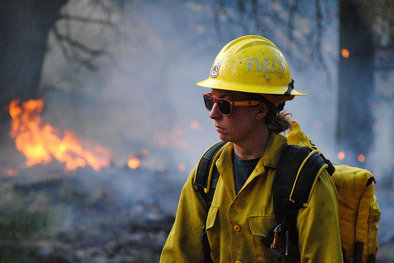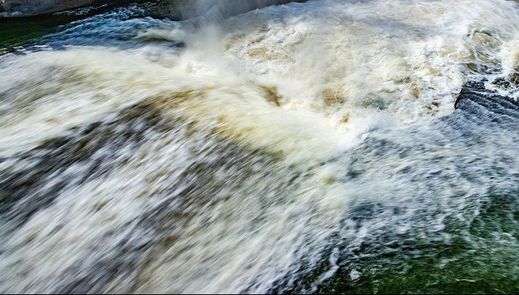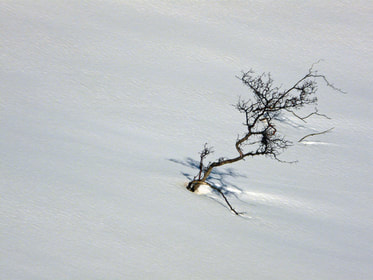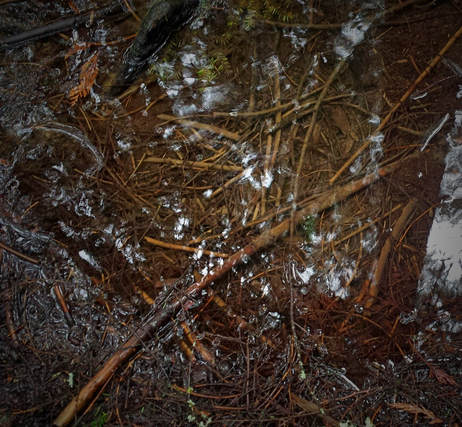Climate Change in the
Kootenays & Glade
|
View from Kalesnikoff log yard: The Glade watershed can be seen in the background, on the other side of the river. The deforested strip is a power line right-of-way.
|
The same log yard a few days later; except now the watershed is almost invisible due to smoke from wildfires. Fires caused by climate changes, human caused (40% according to BC Wildfire) and aided and abetted by fire suppression, aspects of conventional logging practices, and the government policy of allowing all recreation enthusiasts into the bush on resource roads with no oversight.
|
